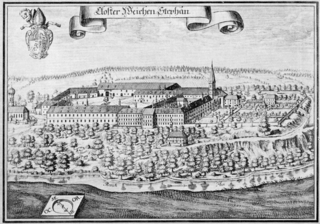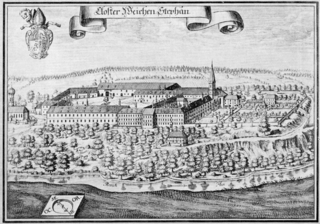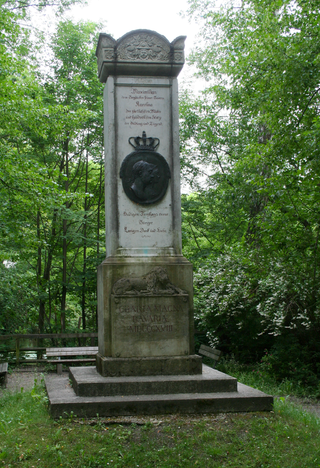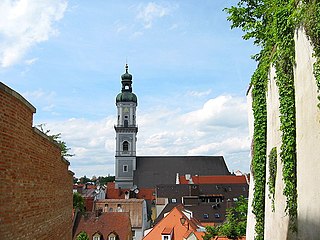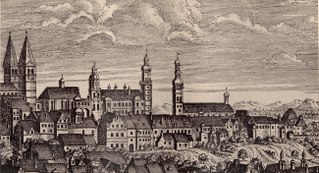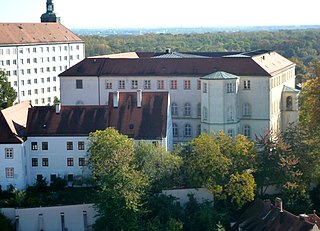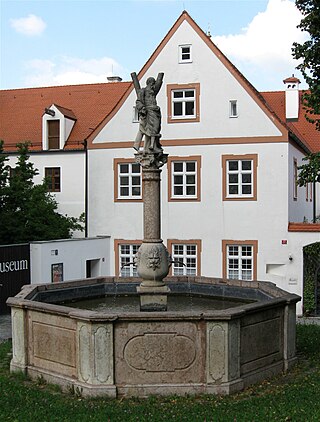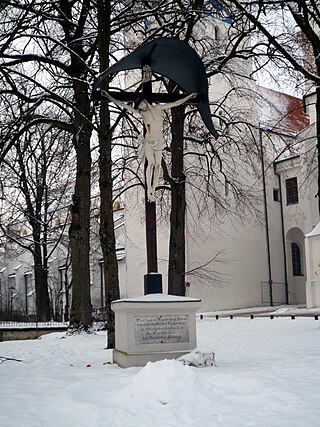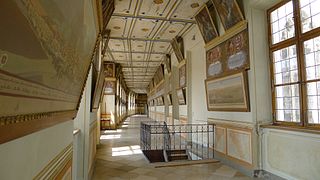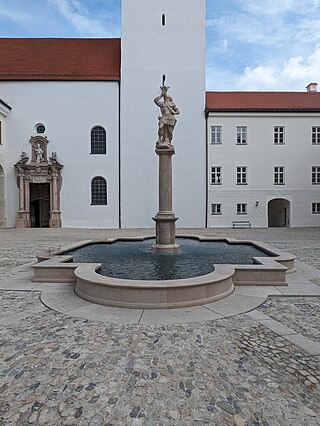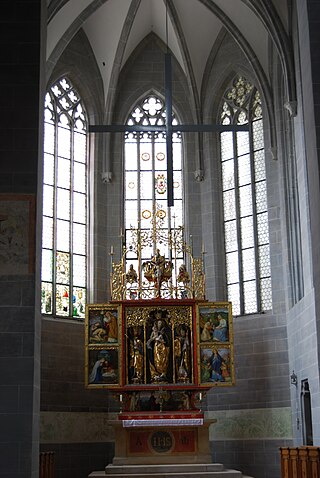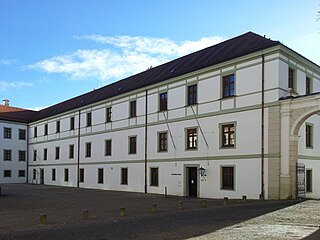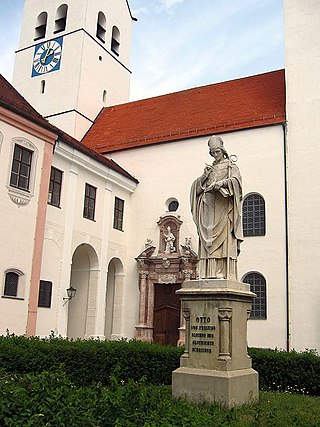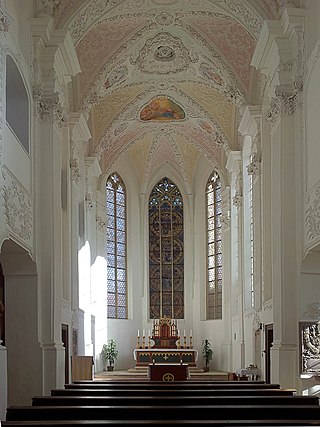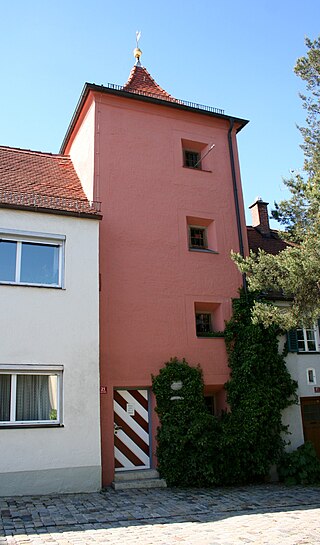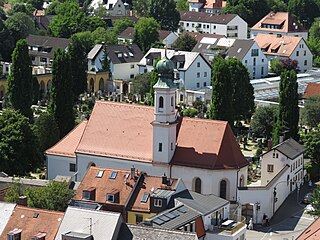Self-guided Sightseeing Tour #1 in Freising, Germany
Legend
Tour Facts
3.9 km
143 m
Experience Freising in Germany in a whole new way with our free self-guided sightseeing tour. This site not only offers you practical information and insider tips, but also a rich variety of activities and sights you shouldn't miss. Whether you love art and culture, want to explore historical sites or simply want to experience the vibrant atmosphere of a lively city - you'll find everything you need for your personal adventure here.
Individual Sights in FreisingSight 1: Korbinianskapelle
The Chapel of St. Korbinian or Asam Chapel was a chapel on the southern slope of the Weihenstephaner Berg in Freising, which stood above a spring, the Korbiniansbrünnlein. The ruins have been preserved and can be reached via the footpaths of the southern slope of Weihenstephan. For some years now, there has also been a staircase again, from the Hofgarten down to the Korbiniansbrünnlein.
Sight 2: ehem. Korbinianskapelle
Weihenstephan Abbey was a Benedictine monastery in Weihenstephan, now part of the district of Freising, in Bavaria, Germany. Brauerei Weihenstephan, located at the monastery site since at least 1040, is said to be the world's oldest continuously operating brewery.
Sight 3: Königsstein
The Königsstein is a stone pillar about four meters high on the banks of the Moosach in Freising. The monument was created by the sculptor Josef Kirchmayr and erected on the occasion of the jubilee celebrations of the 25-year reign of the Bavarian King Maximilian Joseph on February 16, 1824. Until 1853 it stood near the Heiliggeistspital.
Sight 4: Kriegerdenkmal
The war memorial in the Obere Hauptstraße in Freising is a listed war memorial from 1905.
Wikipedia: Kriegerdenkmal in der Oberen Hauptstraße (Freising) (DE)
Sight 5: Stadtpfarrkirche St. Georg
The parish church of St. Georg is the central parish church in Freising.
Sight 6: Mariensäule
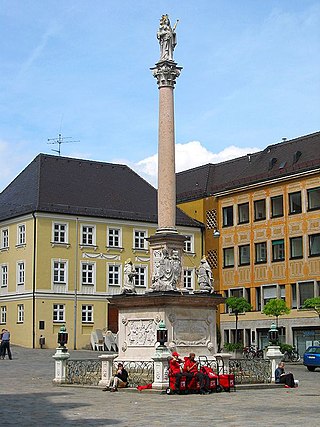
The Marian Column is a red marble column crowned by a figure of Mary in the middle of Marienplatz, in a central location of Freising's old town. The column is one of the most striking monuments of the historic old town. It was founded in 1674 by Prince-Bishop Albrecht Sigismund to venerate Mary as Patrona Bavariae. The Marian column on Marienplatz in Munich may have served as a model.
Sight 7: Korbinian- und Nonnosushof
The Collegiate Abbey of St. Andreas was a collegiate monastery on the Cathedral Hill in Freising (Domannexstift). The buildings of the monastery were located on the western part of the Cathedral Hill, west of the prince-bishop's residence. The collegiate church was the second largest church in Freising after the cathedral; the monastery also included eight parishes with 30 branches.
Sight 8: Diözesanmuseum für christliche Kunst
The Diocesan Museum Freising - DIMU on the Cathedral Hill in Freising is the museum of the Archdiocese of Munich and Freising. The collection contains works from the early 5th century to contemporary modern art. After the Vatican Museums, it houses the world's second largest art collection in the Catholic Church. Individual focal points of the collection are the art of Byzantium, the late Gothic, the Baroque, the present, and testimonies to piety – including an extensive collection of nativity scenes.
Sight 9: Andreasbrunnen
The Andreasbrunnen is a fountain on the western Domberg in Freising (Upper Bavaria). It was built in 1697 under Prince-Bishop Johann Franz Eckher von Kapfing und Liechteneck in front of St. Andrew's Church in the Baroque style. The apostle sculpture comes from the workshop of the Munich sculptor Franz Ableithner.
Sight 10: Denkmal für Freisinger Gelehrte
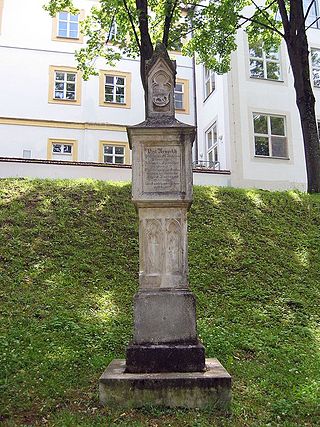
The Monument to Freising Scholars is a small, about two-metre-high memorial stone on the western Domberg in Freising (Upper Bavaria). It was built in the middle of the 19th century below the prince-bishop's residence in the form of a Gothic pinnacle. The monument commemorates the three Freising scholars Veit Arnpeck, Rupprecht von Freising and Joachim Haberstock. The Freising stonemasons Einsele are considered to be the creators, whose signum is located at the foot of the monument.
Sight 11: Cross on Domberg
The crucifix on the Cathedral Hill is a Latin wooden cross about four meters high on the Cathedral Hill in Freising (Upper Bavaria). It was built in 1867 in front of the entrance to the cathedral courtyard.
Sight 12: Fürstengang
The Fürstengang is a connecting corridor on Freising's Cathedral Hill from the Prince-Bishop's Residence Freising to Freising Cathedral.
Sight 13: Dombrunnen
The Cathedral Fountain is a fountain built in 2024 on Freising's Cathedral Hill. The historic statue adorning the fountain is a listed building.
Sight 14: Johanneskirche
St. Johannes Freising is a former collegiate monastery on the Cathedral Hill in Freising in Bavaria in the Diocese of Freising.
Wikipedia: Kollegiatstift St. Johannes (Freising) (DE), Website
Sight 15: Marstall
The Marstall on the Domberg in Freising was built as a court stable for the prince-bishops of the Bishopric of Freising. Today, the building houses the all-day care of the neighboring cathedral high school, the cathedral singing school and Renovabis, the Eastern European aid organization of the Catholic Church.
Sight 16: Denkmal für Otto von Freising
The monument to Otto von Freising is a stone sculpture on the Cathedral Hill of Freising (Upper Bavaria). It commemorates the 22nd Bishop of Freising (1138–1158), who is considered one of the most important historians of the Middle Ages.
Sight 17: St. Benedikt
The Benediktuskirche is a Catholic church on the Cathedral Hill in Freising. The church is located east of the cathedral and can be reached through the cloister that runs through the rear part of the Benedictus Church. The church is separated from the cloister only by iron bars.
Sight 18: Freisinger Dom
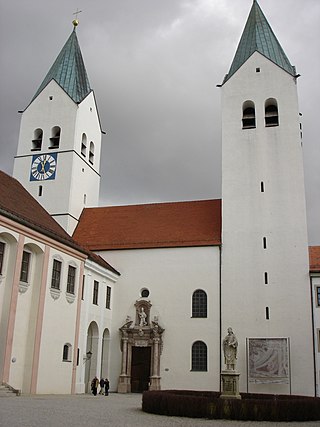
Freising Cathedral, also called Saint Mary and Corbinian Cathedral, is a romanesque basilica in Freising, Bavaria. It is the co-cathedral of the Catholic Archdiocese of Munich and Freising. Freising Cathedral is also known for being the place where Pope Benedict XVI was ordained a priest.
Sight 19: Heilig-Geist-Kirche
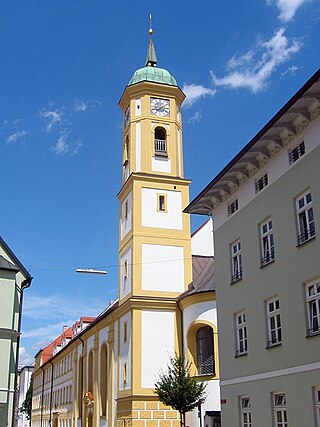
The Heiliggeistspital is a facility serving the care of the elderly in Freising. The company is run by the Heiliggeistspital Foundation.
Sight 20: Bürgerturm
The Bürgerturm is a four-storey watchtower in the northeast of Freising's old town. Today, the tower at Unterer Graben 25 is the last visible remnant of the city wall of Freising's city fortifications, along with the heavily modified Karlsturm.
Sight 21: Gottesackerkirche St. Maria
The Gottesackerkirche St. Maria Himmelfahrt is a Catholic cemetery church in Freising, Germany.
Share
How likely are you to recommend us?
Disclaimer Please be aware of your surroundings and do not enter private property. We are not liable for any damages that occur during the tours.
GPX-Download For navigation apps and GPS devices you can download the tour as a GPX file.
